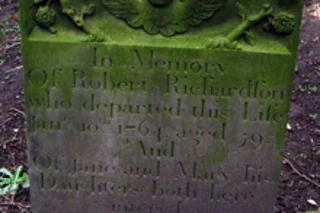To build a history of how Earth's climate has changed over centuries, you need something long-lasting that's been around the whole time—long-lived trees, or cores from ice in Antarctica and Greenland that has built up over the years, or maybe gravestones. Gravestones? They're actually ideal candidates, standing in one place and receiving little touch or attention from the living. If you've ever tried to read inscriptions in an older cemetery, you know what the elements can do to the stone as atmospheric gasses dissolved in the rain wear it down. But to some climate scientists, the amount of wear is raw data attesting to the climate history of the area. So, the citizen science program EarthTrek has begun a "Gravestone Project," asking volunteers to take GPS readings of gravestones and measure the wear. Just be careful, LiveScience reports:
Naturally, volunteers are asked to follow local regulations, laws and customs when ...














